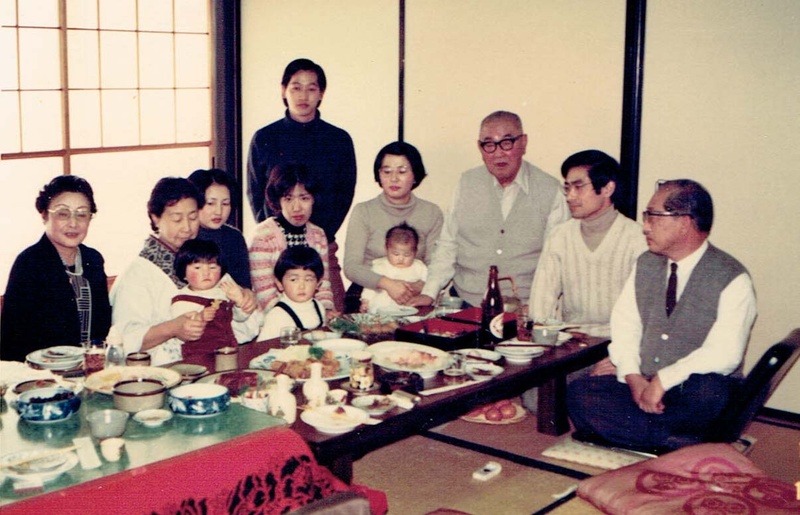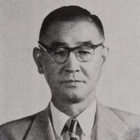I tried to sell my car in Florida.
While searching for Kato Shinichi's relatives, I was lucky enough to come across his nephew, Junji Yoshida, in Tosaka Senashi, Higashi Ward, Hiroshima City in March 2020. Yoshida, who worked in construction, was the eldest son of Kato's younger sister, Harue, and it turned out they had a close relationship, calling Kato "uncle."
Despite it being a chance visit, Yoshida was kind enough to have some time to talk to me. I explained to him that I have been researching Japanese Americans for many years, including writing a non-fiction book about the untold stories of Japanese immigrants in Florida and translating John Okada's "No-No Boy," a masterpiece of Japanese American literature. I also told him that during this time I had come across Shinichi Kato's "One Hundred Years of Japanese Americans in the United States," and that this led to my interest in him and my research into the man he was writing about.
The reasons for my interest were that he had traveled all over the United States to compile records of the first generation of Japanese immigrants, that he had entered the world of journalism, and that he had continued to forge ahead with his own peace movement despite losing his younger brother and sister in the atomic bombing. After I had finished explaining these initial steps, I asked him about the thing I wanted to know most of all: his "driving all over the United States."
"Have you heard anything? Are there any records of how it was traveled or anything like that?"
Yoshida immediately replied:
"Yes, he certainly did. Apparently he traveled from California to each Japanese-American's house. He said he tried to sell a car in Florida but couldn't because it had snow tires on it.... He also said he went around by himself and destroyed a car."
As I thought, it was true that he had driven all over the US mainland, including Florida, which is far from California. I was happy to be able to confirm this fact. When he said that he had "wrecked an entire car," I could imagine that the reporting trip had been very hard on the car.
"Returning to America" is a bit of a challenge
The next thing I wanted to know was what kind of person Kato was. From previous interviews around Kato's family home, he had a reputation for being easygoing and well-liked. Yoshida said,
"I've never heard any bad things about him. He was a cheerful person, and just generally had an incredible amount of drive. (When it came to the peace movement) he went to Tokyo, visited the Diet building and handed out pamphlets; he was full of vitality," he said bluntly.
Kato was tall and sturdy for his time, with a plump face, and seemed to express his carefree personality. Yoshida says something interesting about Kato's facial features.
"My chin is strong, and my uncle said it's because he went to America and ate a lot of meat. There are quite a few people around here who have been to America, and we call them 'American returnees.' Everyone has a strong chin."
Kato was about 20 years older than Yoshida's mother, Harue. Kato himself was born in Hiroshima in 1900, but Harue was born while her father, Matsujiro, was in the United States. She later returned to Japan, but maintained dual citizenship for a long time, eventually renouncing her American citizenship when she moved to the United States in her later years.
Yoshida was born in Hiroshima in January 1942. Kato had returned to Japan on the first Japan-US exchange ship in June 1942, so he knew about his nephew's birth and was fond of Yoshida. However, Yoshida does not remember anything about his childhood.
After that, Kato returned to the United States, where he worked as a newspaper journalist and compiled the 100-year history of Japanese Americans in the United States in 1961. Yoshida met Kato briefly in Tokyo around that time. The 100-year history was published in Los Angeles, but printed by Dai Nippon Printing in Tokyo, so Kato ended up going to Tokyo, likely for the massive proofreading and checking of the nearly 1,500-page book.
"It seems he had been given a room inside Dai Nippon Printing, where he worked. I was a student in Tokyo at the same time, so he would invite me out to eat eel, and treat me to a meal."
Yoshida says nostalgically.
Die in your hometown
After this job, Kato returned to Los Angeles, and Yoshida returned to his hometown of Hiroshima to take over the family business. Some time later, Kato returned to Hiroshima.
"I think he was about 70 years old when he suddenly returned to Japan. He said he wondered what would happen to his soul if he died in America, and that he wanted to die near where he was born. It seems he had received a pension in America, and that would enable him to live in Japan."
A person like Kato, who has worked both in Japan and the United States, might seem to be prepared to spend the rest of his life anywhere, saying, "There is green space everywhere," but it seems he has come to the conclusion that his final resting place is his hometown.
"When I came back, I brought back a huge TV the likes of which I had never seen in Japan. But the voltage was not right, and even when it worked, the picture was grainy," Yoshida says with a laugh.
When immigrants returned from America, it was common for them to bring back various items from America's material wealth or to build American-style homes.
"We once contracted with a man who had immigrated to the United States and become successful in the hotel business to build a house in Hiroshima. He came to look at it halfway through construction, and when he saw where cars were entering and exiting, he said, 'A Cadillac won't fit in like this, so please fix it,'" Yoshida says with a laugh.
Kato used to drive a lot in America, but since coming back to Hiroshima, perhaps because of his advanced age, he has stopped driving and has always ridden a motorbike, which is a type of bicycle with a motor attached. His hobby is fishing, and when he wanted to go out, he would often ask Yoshida to take him by car.
"We mainly went to the sea, to the Seto Inland Sea, but we also went to the mountains," Yoshida recalls.
After returning to Hiroshima, Kato devoted himself to peace activities. He was active and free to move around. However, in the midst of his activities, he suddenly passed away at the age of 81. Yoshida remembers that time well.
(Some titles omitted)
© 2021 Ryusuke Kawai







